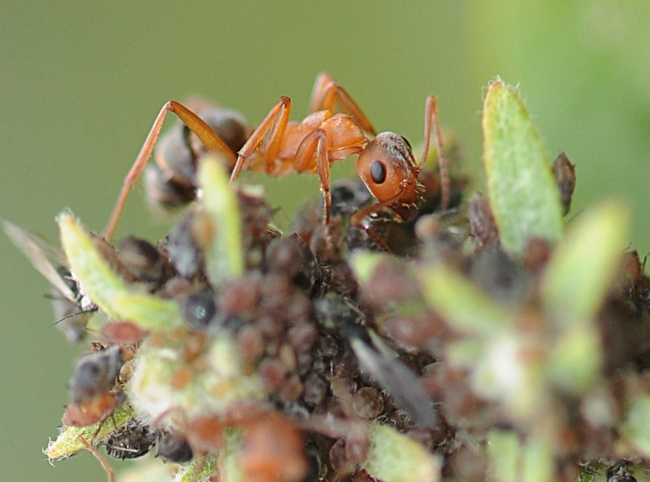- Author: Kathy Keatley Garvey

And she'll be conveying that passion and her passion for science when she presents a UC Davis Department of Entomology and Nematology online seminar on Wednesday, May 19.
Postdoctoral researcher Manuela Ramalho of the Corrie Moreau lab, Cornell University, will speak on "Exploring Connections among Microbial Community, Ecology and Phylogenetic History of Ants" from 4:10 to 5 p.m. UC Davis insect ecologist Marshall McNunn is serving as the host. Access the seminar through this Zoom link.
"Symbiotic interactions shape animal evolution and govern patterns of biodiversity," Ramalho writes in her abstract. "Using ants as a study model, my research focuses on unraveling the role of host ecology, diet, behavior, stage of development, and phylogeny on symbiotic interactions."
Ramalho, a cell and molecular biologist from Brazil, joined the Moreau lab in January 2019. She holds three degrees from Universidade Estadual Paulista Júlio de Mesquita Filho (UNESP): a bachelor's degree (2010), master's degree (2013) and doctorate (2017). Her doctoral thesis: "Ants' Microbiome with Emphasis in Camponotini (Hymenoptera, Formicidae."
Experienced in the areas of microbiome, genetics, genomics, and more specifically molecular biology, Ramalho focuses her research on "understanding the mechanisms that impact microbial communities, unraveling the role of ecology, diet, behavior, stage of development, and also phylogeny of the host in these symbiotic interactions," she writes on her website. "To better understand these mechanisms, I use ants as a study model. In several ant genera, symbiotic interactions with microbial communities have been shown to have profound impacts on the host. But more than that, ants can be found across the globe and have an immense diversity of behaviors and ecology. Also, ants are fascinating."
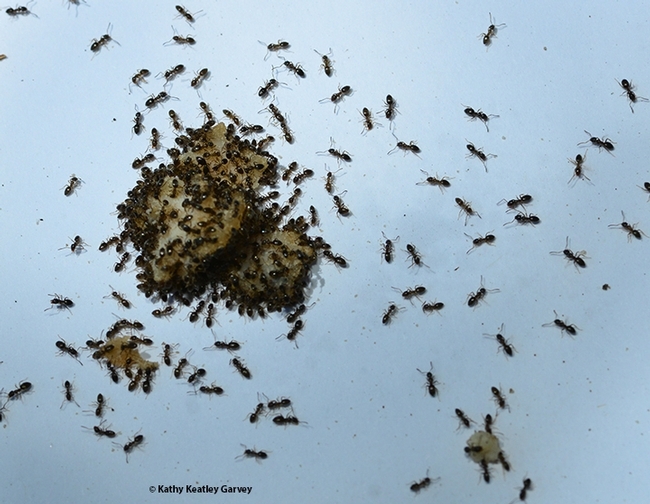
"Talking and spreading science has always been a passion for me, but our daily lives have shown that being engaged in these activities is crucial for a scientist. I am a Brazilian, a woman/parent in science, and a myrmecologist who uses ants as a way to engage people with science. Diverse audiences and of all ages have some curiosity about these small insects that occur all over the world in the most diverse colors and shapes. We just need to be creative in how to attract this audience!"
She is a subject editor of Myrmecological News and recently reviewed a publication y UC Davis alumnus Andrea Lucky, titled “Myrmecology, Gender, and Geography: Changing Demographics of a Research Community Over Thirty Years." Lucky, an assistant professor at the University of Florida, received her doctorate in 2010 from UC Davis, studying with Phil Ward.
Ramalho co-authored "Attractivity or Repellence: Relation Between the Endophytic Fungi of Acalypha, Colocasia and the Leaf-Cutting Ants--Atta sexdens," published in April 2021 in Advances in Entomology.
Other recent publications include:
Ramalho, M.O., Kim, Z.; Wang, S.; Moreau, C. S.: "Wolbachia across Social Insects: Patterns and Implications." Annals of the Entomological Society of America, 2021.
https://doi.org/10.1093/aesa/saaa053
Ramalho, M.O.; Moreau, C.S.: "The Evolution and Biogeography of Wolbachia in Ants (Hymenoptera: Formicidae)." Diversity, 12, 426. 2020.
https://doi.org/10.3390/d12110426
Caruzo, M.B.R.; Ramalho, M.O.; Philipp, J.; Bragagnolo, C.: "Maternity, Science, and Pandemic: an Urgent Call for Action!" Hoehnea, 47: e812020. 2020.
https://doi.org/10.1590/2236-8906-81/2020
Cooperative Extension specialist Ian Grettenberger coordinates the spring seminars, which take place every Wednesday at 4:10 p.m. He may be reached at imgrettenberger@ucdavis.edu for any technical issues.
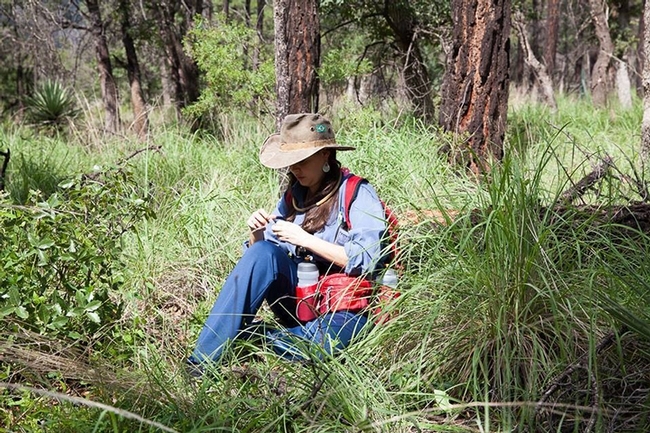
- Author: Kathy Keatley Garvey
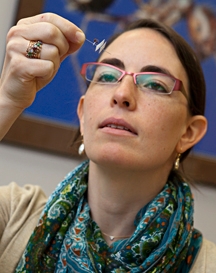
But "citizen scientist" is a catchy term, all the same. Basically, it's the public engagement in scientific research activities.
“Citizen Science is a powerful tool that scientists can use to harness the power of the public,” says entomologist Andrea Lucky. "Public participation in science offers both scientific and educational benefits, including the possibility of massive and openly accessible data. This approach holds the promise of a new way of doing science and a new way of learning science, but also poses challenges of organization, quality control and funding. Two projects, the School of Ants and Backyard Bark Beetles were developed to address the main concerns with Citizen Science projects, and demonstrate how modern public participation in science can be an effective tool for teaching science and investigating topics including, but not limited to biodiversity, invasive species, population genetics, and systematics.” (Read what Entomology Today says about citizen science and Andrea Lucky's role. Also check out her citizen science projects on her website.)
Lucky, an assistant research scientist with the Department of Entomology and Nematology at the University of Florida--she received her doctorate in entomology from UC Davis, working with major professor/ant specialist Phil Ward--will speak on "From Pavement Ants to Population Genetics: Citizen Science Today and Tomorrow" on Wednesday, May 28 at a seminar hosted by the UC Davis Department of Entomology and Nematology.
Her talk, from 12:10 to 1 p.m. in 122 Briggs Hall, off Kleiber Hall Drive, is scheduled to be recorded for later viewing on UCTV.
A native of Chicago, Andrea Lucky grew up in Cincinnati, graduated from Brown University in Providence, Rhode Island, and then spent two years as a Fulbright scholar studying insects in Ecuador. Her insect talks are numerous. She was an invited speaker at the 2012 International Congress of Entomology, Daegu, South Korea, Aug 2012. She has also presented her work at the Entomological Society of America (ESA), and Pacific Branch of ESA and has taught numerous classes, seminars and workshops. At UC Davis, she designed a course on “Insects and the Media,” which she taught in the spring of 2006 and the fall of 2008. In 2009, she won a UC Davis outstanding graduate student teaching award, presented to her by the chancellor.
One of her goals is to "make science accessible and available to the general public, particularly to make the process of 'doing' science accessible to non-scientists."
A noble and worthwhile goal, indeed.
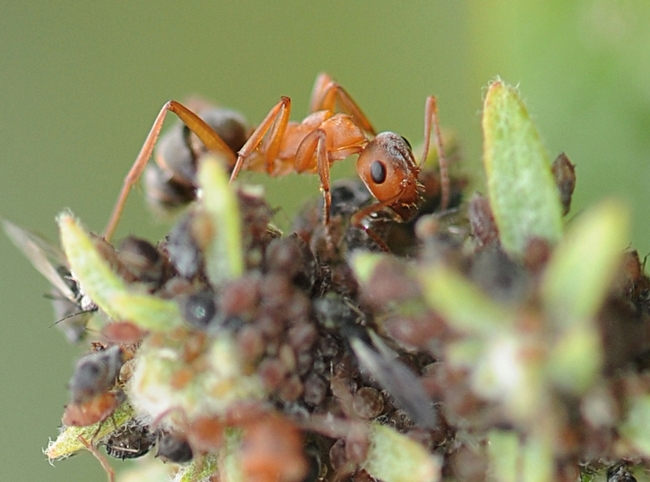
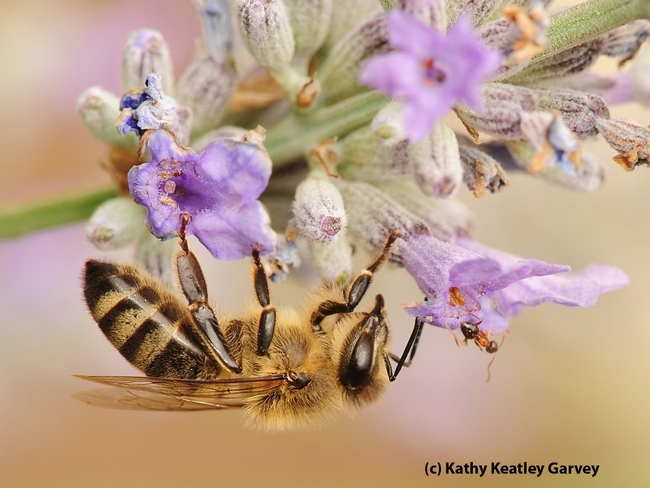
- Author: Kathy Keatley Garvey
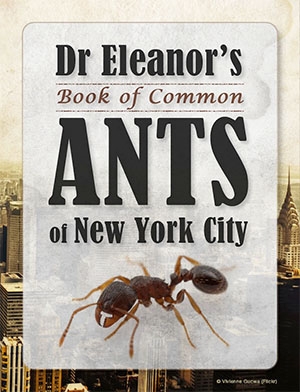
And it's not only a book you can't refuse, but you can reuse over and over again. It's that fascinating.
"Dr. Eleanor's Book of Common Ants of New York City" is a free, interactive ebook, available from ITunes. It also can be downloaded as a PDF.
This ebook, meant for youths in grades 4 through 12 but equally enthralling to us adults, will tell you about the ants that live in the Big Apple, what they do, how they survive, and where to find them. They include the carpenter ant, lasius ant, odorous house ant, crazy ant, winter ant, Asian needle ant, winnow ant, big headed ant, thief ant, acrobat ant and honeyrump ant.
Truly, there is a honeyrump ant.
The book was written by entomologist Eleanor Spicer Rice and biologist Rob Dunn of the Your Wildlife group, a public science program based at North Carolina State University that engages the public "in the exploration and scientific study of the biodiversity in our daily lives."
Why ants? Dr. Eleanor says she loves all insects but is "particularly fascinated by ants." In earning her doctorate in entomology from North Carolina State University, she studied the behavior and interactions of two invasive ant species, the Argentine ant and the Asian needle ant. "Ever since she was a little girl exploring the swamps and woods around her hometown of Goldsboro, North Carolina, Eleanor has had a boundless curiosity for the natural world," according to the author description. "When she's not turning over logs or poking at the cob-webby corners of her basement in pursuit of a six-legged critter, Dr. Eleanor is sharing her passion about entomology through writing (see her website."
Rob Dunn, a biologist and writer in the Department of Biological Sciences at North Carolina State University, craves being around insects, too. The author description: "Central to all of his work is the sense that big discoveries lurk not only in faraway tropical forests but also in our backyards and even bedrooms. The unknown is large and wonderful, and Dunn and his collaborators, students, and postdocs love to spend their days in it."
There's also a University of California, Davis connection. Two connections, actually. The book's amazing insect images are primarily the work of Alexander "Alex" Wild while Andrea Lucky served as the scientific advisor. Both received their doctorates in entomology from UC Davis, studying with acclaimed ant specialist Phil Ward, professor of entomology.
Wild, now a biologist in Illinois and a full-time professional insect photographer, has published his work in National Geographic, Discover, Smithsonian Magazine, Proceedings of the National Academy of Sciences, and numerous other publications and museum exhibits. He writes the Compound Eye blog for Scientific American and the Myrmecos blog. Lucky is an evolutionary biologist and biodiversity scientist at the University of Florida. One of her goals (in addition to her research interests) is "to make science accessible and available to the general public, particularly to make the process of ‘doing' science accessible to non-scientists."
The book is a wonderful means of linking young people with science, and teaching all of us about an insect that is so common among us, but yet so unfamiliar.
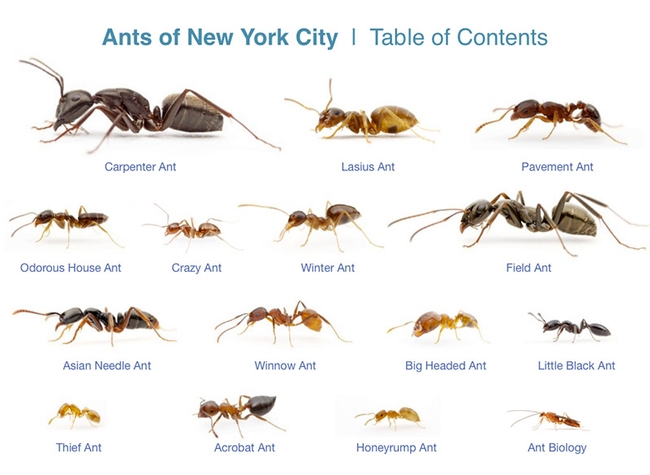
- Author: Kathy Keatley Garvey
Lavender.
Honey bees love it.
We watched a honey bee foraging on lavender blossoms last weekend, when an ant appeared on the scene. The ant? A worker of Liometopum occidentale (velvety tree ant), according to ant specialist Phil Ward, professor of entomology at the University of California, Davis.
If you don't know much about ants, but have always admired them, then "Dr. Eleanor's Book of Common Ants," is for you.
It's the collaborative work of two entomologists: biologist/science writer Eleanor Spicer Rice, who received her doctorate in entomology from North Carolina State University, and biologist/insect photographer Alex Wild, who received his doctorate in entomology from UC Davis, studying with Ward.
In a recent Myrmecos blog, Wild describes the book as "an entry-level ebook written for the general naturalist curious about ants. Dr. Eleanor recounts stories of the most common species seen in the southeastern United States, interspersed with photographs from my galleries."
"It’s the kind of book you give to the young naturalist who wonders about the ants on the sidewalk," Wild says, "or perhaps to that grumpy uncle who never quite seems to get what it is you are doing in graduate school studying the little creatures."
And, guess what? The Dr. Eleanor/Dr. Alex book is free to download. One way to receive it is to access the Myrmecos blog and click on the I-Tunes and/or PDF links.
Rice relates that she's always been fascinated by ants. So is Andrea Lucky, who, like Wild, received her doctorate in entomology from UC Davis with Phil Ward. Lucky heads the widely acclaimed citizen-scientist project, "The School of Ants." (The School of Ants project is based in the Lucky lab at the University of Florida's Department of Entomology and Nematology and the lab of Rob Dunn in Biology at North Carolina State University. (Email them at theschoolofants@gmail.com if you want to know more.)
But back to "Dr. Eleanor's Book of Common Ants." It's fascinating. It's riveting. It's superb. The easy-to-read text and the amazing photos draw you in. You can literally feel the excitement, enthusiasm and passion when Dr. Eleanor asks "What's the big deal about ants?"
"We might not notice them, but ants surround us, occupying nearly every type of habitable nook and cranny across the glove," she writes. "Right now, ants snuggle up to your house, lay out their doormats in front of the trees in your yard, and snooze under your park benches. Some even nest inside the acorns littering the ground."
"We might not notice them, but they're there, and they shape, literally shape, our world," she points out.
And if you look closely in your own back yard, you just might see an ant and a bee sharing a lavender blossom.
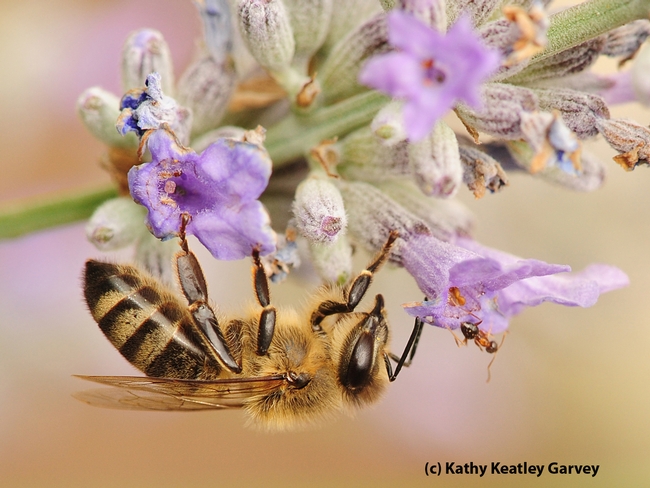
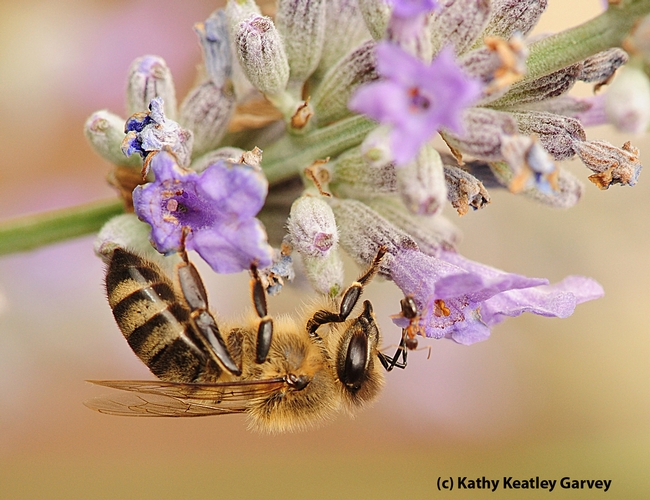
- Author: Kathy Keatley Garvey
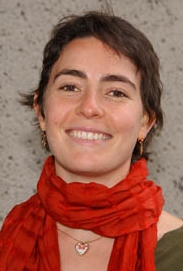
Of course you do.
But probably not as much as Andrea Lucky, the "Queen of Ants."
(Or as much as Phil Ward, her major professor at UC Davis or Alex Wild, the Illinois-based biologist and insect photographer who also studied with Ward. Both Lucky and received their doctorates in entomology from UC Davis.)
Lucky, now on the faculty of the Department of Biology, North Carolina State University, is spearheading the School of Ants project, housed in the lab of Rob Dunn.
What's it all about?
It's a citizen-scientist driven study of the ants that live in urban areas, particularly around homes and schools, Lucky says.
Anyone can participate: teachers, students, parents, junior scientists and just plain (and fancy) ant enthusiasts.
The project involves collecting ants in backyards and schoolyards "using a standardized protocol so that we can make detailed maps of the wild life that lives just outside (or even in) our doorsteps," Lucky says. The data-rich maps "will tell us a lot about native and introduced ants in cities, not just here in North Carolina, but across the United States and, as this project grows, the world!"
Many folks, Lucky says, have asked her about contributing to the project, so there's now a SciFund Challenge and donations are being accepted. "Our fundraising campaign has just six days left," she says, "but of course the project goes on past that deadline."
And the spectacular ant photos on School of Ants website were generously provided by...drum roll...Alex Wild.
Between the photos and the text, there's a wealth of information about ants on the site.
All in all, it's good to see citizen scientists monitoring ants. Ants don't share the same PR image as ladybugs, butterflies and native bees, also tracked by citizen scientists.
Myremecology matters.
One, two, three, all together now, can you say "Myrmecologists"?
